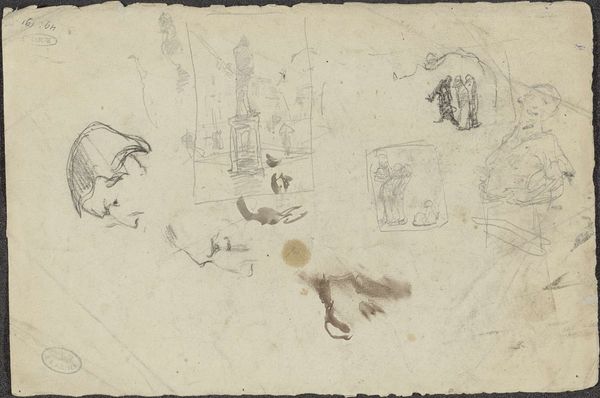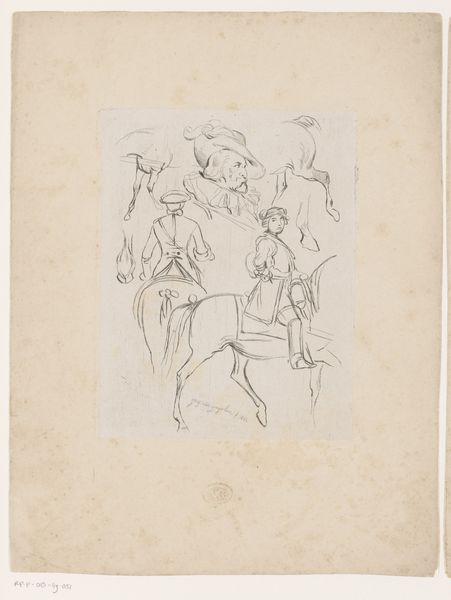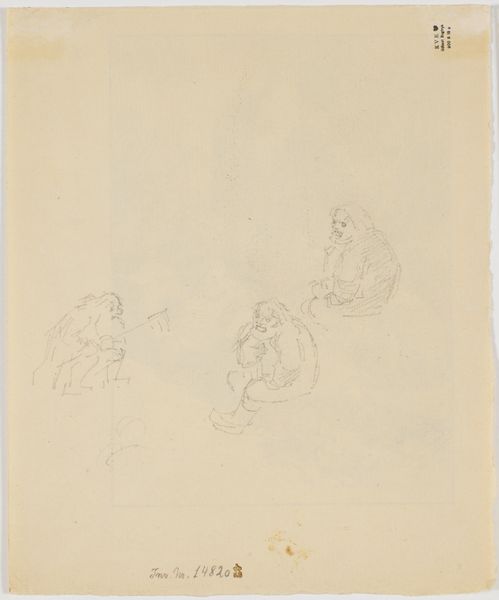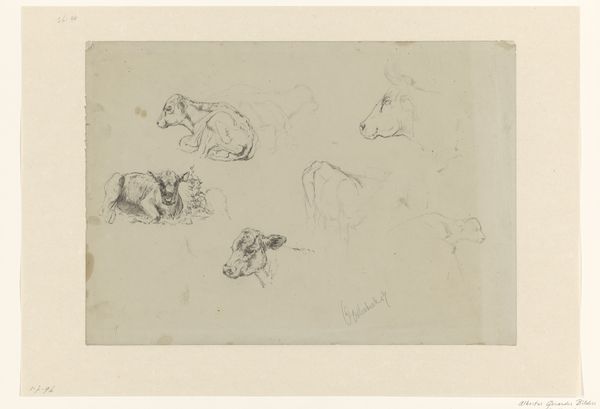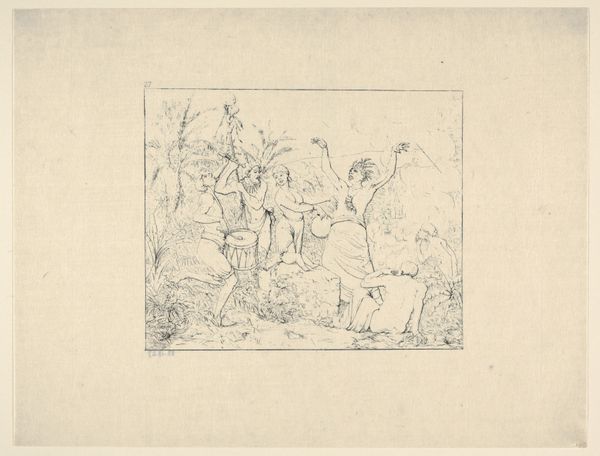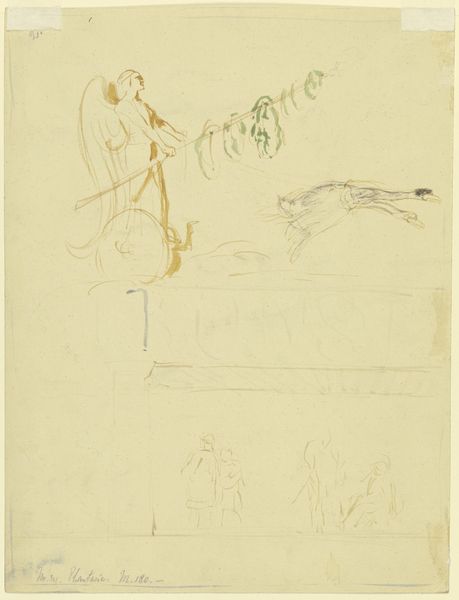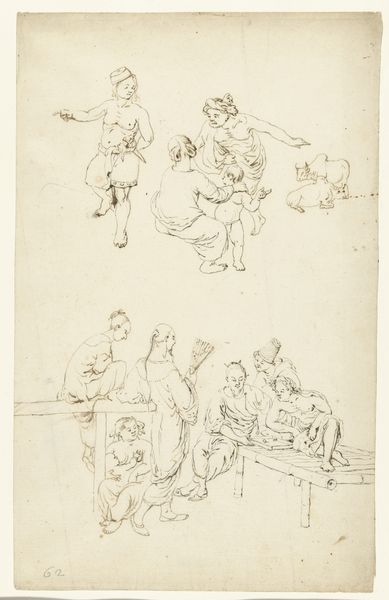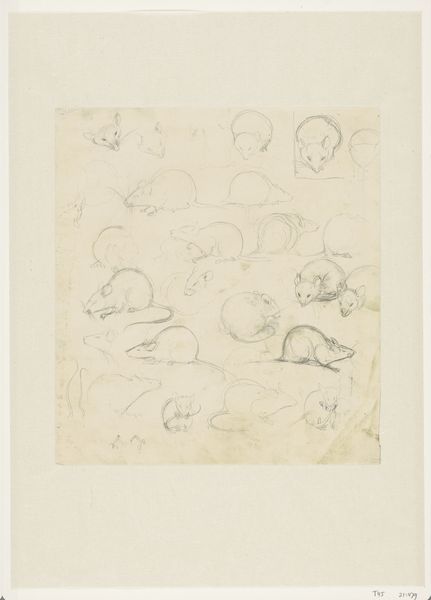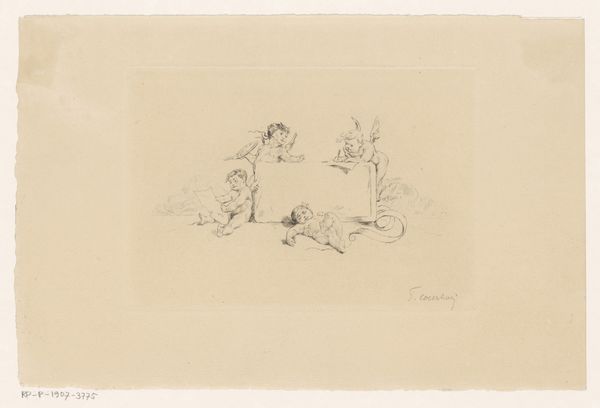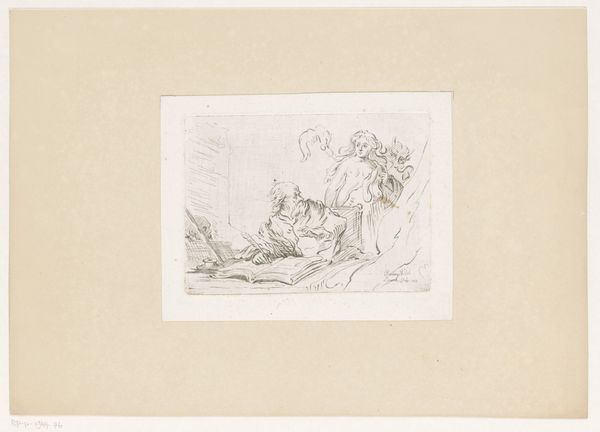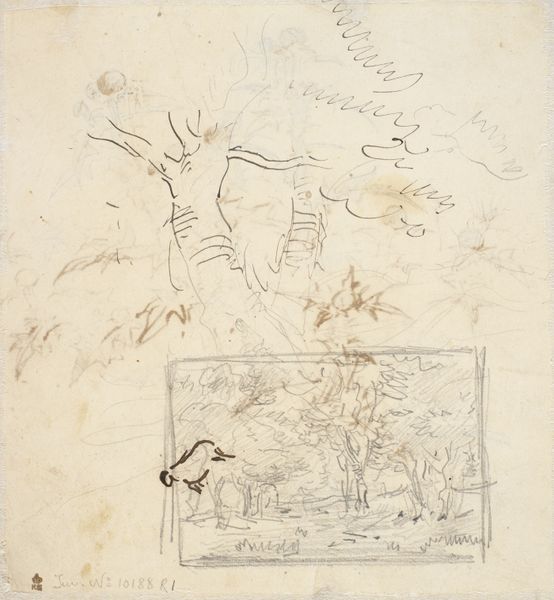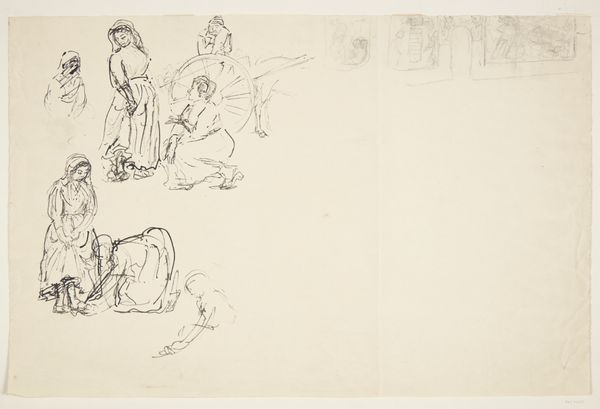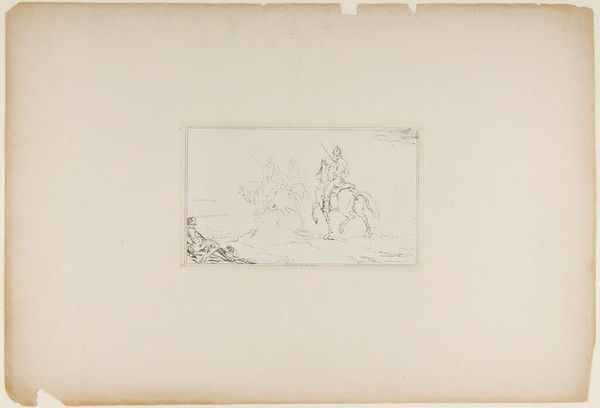
drawing, paper, graphite
#
drawing
#
landscape
#
paper
#
graphite
#
genre-painting
#
realism
Dimensions: height 340 mm, width 299 mm
Copyright: Rijks Museum: Open Domain
Curator: This graphite drawing, entitled "Schetsblad met studies van een ploegende boer", which translates to "Sheet with studies of a plowing farmer", is attributed to George Hendrik Breitner. The Rijksmuseum holds this piece, which dates roughly between 1867 and 1923. What are your first impressions? Editor: Stark, immediate. There’s a rough and ready quality to it; the sketchiness almost implies movement. I'm drawn to the raw materiality of the graphite against the paper; it evokes a sense of labour, but also one of fleeting observation. Curator: Precisely! Considering the timeframe, we can see Breitner engaging with the Realist movement, which sought to depict everyday life, including the often-overlooked labor of rural workers. How does the act of drawing, using graphite and paper, become part of the artwork's narrative about labor itself? Editor: I think it highlights the physical act of *making*. We’re reminded that art production, even a preliminary sketch, requires human energy. Look at how Breitner uses economical strokes, not striving for photorealism, but instead, captures the essence of this arduous process and the material realities facing farmers during that period. It moves from being a pastoral scene to something of social commentary, right? Curator: Absolutely. These are not idealized landscapes; they're working landscapes, depicting the unromantic reality of agricultural labor. I think Breitner here gives visibility to a social class through these drawings that were often relegated to the background. The institutional framing is equally important. Editor: Yes, placing it in the Rijksmuseum elevates these 'sketches' to a national stage. By including works that document daily work, the art institutions are changing how people think about representation, especially working-class subjects and rural realities. Also, the means of distribution would be critical. How was it viewed? Was it available for public consumption? Curator: Those are valid questions. Drawings like these were probably made in preparation for larger paintings, potentially accessible for public view. Regardless, their presence here today signals a shifting cultural and institutional interest in representing broader social strata. Editor: Seeing the materials used here—the simple graphite and paper—highlights an unvarnished perspective on life. The institutional acceptance of such subjects underscores art's role in reflecting societal evolutions. Curator: Ultimately, these sketches transcend mere representations of rural life and are testimonies of our continuous negotiation with our cultural heritage.
Comments
No comments
Be the first to comment and join the conversation on the ultimate creative platform.

